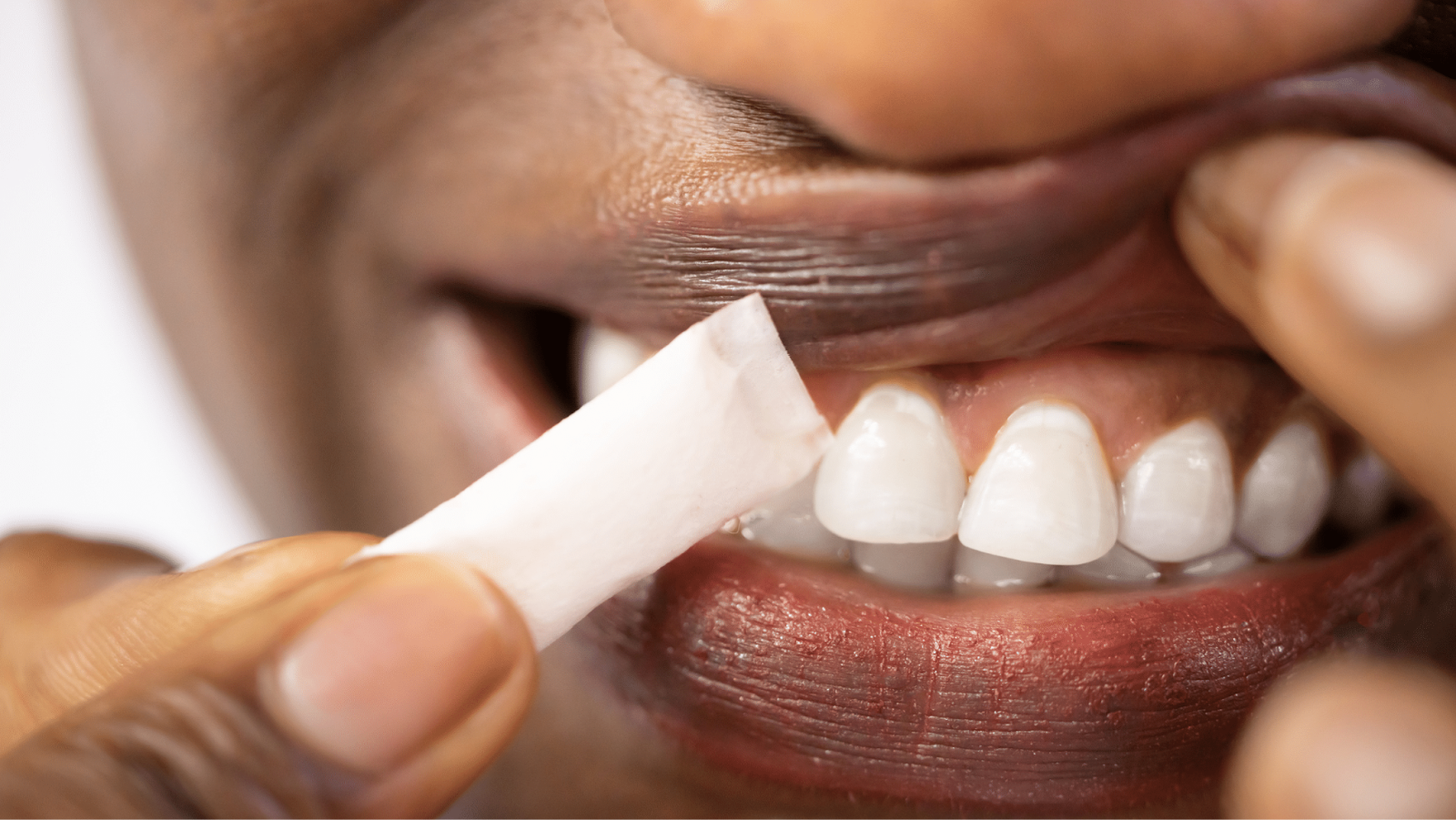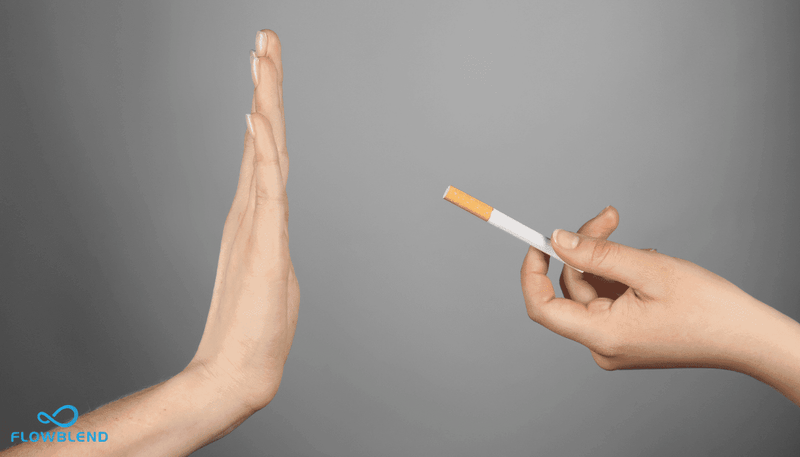Key Takeaways:
- The Timeline Gets Easier Over Time: Physical withdrawal ends in about a week, but mental recovery takes longer. With the right tools and mindset, you can outlast every phase.
- Use Healthy Ways to Boost Energy: Stimulant-free focus tools like Stoked Pouches can reduce brain fog and support mental clarity during withdrawal. They provide energy without falling back into addiction loops.
- Build New Habits That Stick: Quitting nicotine isn’t just about detoxing — it’s about replacing old triggers with intentional routines. Long-term success comes from daily decisions that align with your new identity.
What if the hardest fight you’ll ever face is the one happening inside your head, one craving at a time?
Quitting nicotine isn’t a clean break. It’s a brawl between old habits and new choices. It’s the restlessness at midnight, the short fuse at 3 PM, the wave of fatigue that hits just as your focus should peak. But beneath all that discomfort, something better is being built — stamina, sharpness, and control. You’re not just quitting nicotine. You’re taking your power back.
At Flowblend, we know this fight—and we don’t just talk the talk. We built Stoked Energy Pouches to fuel high-performers and nicotine quitters alike—people who need clean, plant-powered focus without addiction. Our products are backed by science, tested by warriors, and crafted for those who refuse to coast.
In this piece, we’re breaking down the quitting nicotine withdrawal timeline — what happens, when it hits, and how to outlast every wave of discomfort. If you’re serious about quitting, we’ll help you stay sharp while you do it.
The First 24 Hours: Battling The Urge
The clock starts the moment you quit. And those first 24 hours? They’re no joke. Your body has gotten used to regular nicotine hits, and now it’s sounding the alarm. You might feel anxious, restless, edgy — like something’s missing. That’s because it is.
Your brain, which once relied on nicotine to release dopamine, now has to figure out how to function without the shortcut. That’s why cravings hit early and hard. Sleep may feel off. Food tastes sharper. Emotions feel raw. And while this might sound like bad news, here’s the truth: this is the sign your system is waking back up.
Here’s the grit: if you can make it through this first day, you’re already ahead of 80% of people who try and relapse. That’s not just encouraging — that’s a damn victory.
Instead of white-knuckling it through the day, replace the ritual. Reach for hydration. Chew something. Move your body. And when your focus starts to slide or the crash creeps in, that’s where Stoked Energy Pouches step up. With nootropics like L-theanine and clean caffeine, they give your brain and body the boost it craves, without the addictive fallback.
You’re not quitting nicotine to feel weak — you’re quitting it to get sharp again.

Day 2 To Day 3: Cravings Hit Hard
This is where the mental game gets real. By day two or three, nicotine has mostly cleared from your bloodstream. But your brain? It’s still screaming for it. You might feel moody, tired, mentally foggy — like you’re wading through the day in slow motion.
Cravings peak during this window. Not just for nicotine, but for anything that fills that dopamine gap — junk food, social media, even mindless scrolling. It’s your brain’s way of begging for the rush it used to get in seconds. But here’s the raw truth: these cravings are temporary. Every hour you push through, you’re retraining your mind to fire without the fix.
This is the phase when most people give in—not because they’re weak, but because they didn’t come prepared.
So be ready. Stack your tools. Create friction between you and the craving. Go for a cold shower, hit the gym, or throw in a Stoked Energy Pouch to kickstart mental clarity without giving your body what it’s trying to shake. Our blend of clean caffeine and brain-boosting nootropics delivers focus and alertness without the crash, giving your system something real to work with.
Remember: this isn’t withdrawal — it’s rewiring.
Day 4 To Day 7: The Fog Begins To Lift
The nicotine is gone, but your brain is still catching up. This is the turning point — a phase where early wins begin to surface, and the withdrawal loses its edge. It’s not smooth sailing yet, but the light starts breaking through the storm clouds:
Cravings Shift From Physical To Mental
By day four, your body has flushed out the nicotine. What’s left are the mental triggers — routines, environments, and emotional patterns that still whisper, “Just one won’t hurt.” This is where mindfulness becomes your sharpest tool.
The Fog Begins To Clear
That heavy, slow-thinking cloud that’s been hanging over you? It starts to lift. Your focus sharpens in brief bursts, and your brain begins to find its rhythm without nicotine hijacking your dopamine flow.
Mood Swings Start To Stabilize
The emotional chaos of days one through three begins to fade. You might still feel irritable or short-tempered, but your ability to reset and recover improves. You’re not just reacting anymore — you’re regaining control.
Triggers Linger — Stay On Guard
Even without nicotine in your system, your habits and muscle memory are still wired to reach for it. A stressful moment, a meal, or a long drive can kick up old cravings. Recognizing these patterns is half the battle; replacing them is the other half.
Fuel Your Mind With Clean Energy
This is the perfect time to introduce better fuel, not just a distraction, but a cognitive upgrade. Stoked Energy Pouches bring nootropics and natural caffeine, helping you lock in focus and energy without falling back into the cycle. It's not a substitute for nicotine — it’s an upgrade.
Week 2: Breaking The Habit Loop
You’ve made it past the chemical battle — now it’s all about psychology and routine. The physical withdrawal is over, but the brain still craves structure. This phase is about dismantling the old loops and installing new ones that support your energy, clarity, and drive:
- Your Brain Is Rewiring: Without nicotine interfering, your neurotransmitters begin stabilizing on their own. Your natural dopamine and serotonin levels start to rebalance, making your moods feel more grounded. You’ll start to notice a more consistent sense of well-being — not artificial highs, but steady baseline strength.
- Old Triggers Still Test You: Your brain doesn’t forget your routines overnight. That morning coffee, the lunch break, your evening wind-down — they all used to be nicotine’s turf. Those habits will still whisper to you this week, and you’ll need to answer back with intentional, healthier routines.
- Behavior Change Becomes the New Priority: Now that your body isn’t physically dependent, the real work is building mental discipline. It’s about asking, "What do I really want in this moment—clarity or comfort?" and then choosing the thing that aligns with the future you're chasing.
- Energy and Focus Can Still Dip: Even though the fog has lifted, your brain might still lag on energy some days. That’s normal — you’re rebuilding without shortcuts. Stoked Energy Pouches can give you a clean, controlled boost without the baggage of addiction, keeping you sharp when your internal systems are still catching up.
- You’re Forming a New Identity: This is where “quitter” starts turning into “builder.” You’re not just someone who gave something up — you’re becoming someone who’s building strength, stamina, and presence. Every choice you make reinforces the new you.

Weeks 3 To 4: Your Body Starts Rebalancing
By now, you’ve moved past the worst — no more withdrawal spikes, no more constant cravings. But that doesn’t mean you’re in the clear just yet. This is the phase where your body begins to rebuild what nicotine broke down.
Your cardiovascular system starts performing better — breathing becomes easier, blood pressure stabilizes, and your endurance improves. It’s not just internal; people around you might start noticing how you look and carry yourself. You’re not dragging through the day anymore — you’re moving with purpose.
Mentally, the fog is mostly gone, but your focus might still come and go. That’s because your brain is still adjusting to life without nicotine’s false dopamine bursts. Supporting this phase with nootropics and clean caffeine, like in Best Caffeine Pouches, helps reinforce mental clarity and stamina, naturally.
More than anything, this stage is about building consistency. You’re starting to think like someone who doesn’t just want to quit — you’re someone who already has. Keep showing up for the new version of yourself, even on the slower days — that’s where the long-term wins are forged.
1 To 3 Months: Long-Term Wins And Staying Sharp
This is where things begin to click — your body, mind, and lifestyle are syncing up without nicotine. You’re no longer “in withdrawal,” but in the after. These weeks are about sharpening your edge, sustaining your wins, and continuing to build the upgraded version of yourself:
Your Brain Is Firing On All Cylinders
Cognitive performance improves — faster thinking, better memory, and smoother communication. Your brain is no longer relying on chemical triggers to stay alert. Instead, it’s operating from its natural rhythm, and you’re starting to feel dialed in.
Physical Performance Rebounds
You'll feel stronger and more capable in your workouts, hikes, or day-to-day stamina. Your oxygen intake is up, blood circulation is smoother, and recovery is quicker. The foggy, sluggish version of you? He’s long gone.
Mood And Motivation Stabilize
The emotional volatility from earlier weeks settles into balance. You feel more even-keeled, less reactive, and more in control of your day. It’s not just that you feel better — you are better, inside and out.
Cravings Rarely Show Up — But When They Do, You’re Ready
Every now and then, a thought might sneak in — a trigger from your old life. But now you’ve got distance, tools, and discipline on your side. Whether it’s a brisk walk, deep breath, or Caffeine Pouches — you know how to redirect and refocus without slipping.
You’re Not Just Clean — You’re Optimized
You didn’t quit nicotine to be average. You did it to show up harder, sharper mind, cleaner energy, no limits. Tools like Stoked don’t just replace what you lost — they help unlock what you had buried under the addiction.
Staying Nicotine-Free For Life
At this point, you’ve done what most people only talk about — you didn’t just quit nicotine; you replaced it with something stronger: ownership. But the truth is, staying nicotine-free isn’t about never thinking of it again — it’s about choosing not to go back, even when the old voice whispers. That voice will fade, but it never fully dies — and that’s where mindset and momentum matter most.
The mission now is to keep building forward. Stack routines that support your goals, fuel your energy with clean alternatives like Stoked, and surround yourself with habits that reinforce your decision. You’re not dodging nicotine anymore — you’ve outgrown it.
This isn’t a pause on your old life — this is the start of something better. You’ve got mental clarity, real stamina, and a sharper edge than you ever had when you were using. Hold the line, live with intention, and remind yourself daily: you didn’t quit because it was easy — you quit because you were ready to level up.

Final Thoughts
Quitting nicotine is more than breaking a habit — it’s a personal revolution. The withdrawal timeline isn’t a punishment; it’s proof that your body and mind are recalibrating for something better. Yes, it’s uncomfortable. Yes, it tests your will. But with every passing hour, you’re shedding dependency and rebuilding resilience. This journey demands grit, but it also delivers growth. You don’t just come out nicotine-free — you come out sharper, stronger, and fully in charge of your energy.
Read also:
- Is Tobacco-Free Nicotine Safe? Risks Explained
- Are Coffee Pouches Good For You? Pros And Cons
- How Many Nicotine Pouches Per Day Is Safe?
Frequently Asked Questions About Quitting Nicotine Withdrawal Timeline
How long does it take to mentally detach from nicotine after quitting?
Mental detachment from nicotine often takes longer than physical withdrawal, sometimes up to 6 months. That’s because your brain associates certain emotions, routines, and environments with nicotine use. Breaking these associations takes intentional lifestyle changes and time.
Can quitting nicotine affect your sleep long term?
Yes, sleep disturbances can persist for several weeks after quitting nicotine. Nicotine disrupts REM cycles, so your body may need time to restore its natural sleep rhythm. Using calming supplements or sleep hygiene practices can speed up the adjustment.
Does quitting nicotine affect your metabolism?
Nicotine is a stimulant that slightly increases your resting metabolic rate. When you quit, your metabolism may slow down for a short period, which can sometimes lead to mild weight gain. Regular physical activity and clean energy products help balance this shift.
Are there specific foods or nutrients that help with nicotine withdrawal?
Yes — foods rich in antioxidants, B vitamins, and magnesium can support your nervous system during withdrawal. Leafy greens, whole grains, and lean proteins help regulate dopamine and serotonin naturally. Staying hydrated is also critical during this detox phase.
What are some effective distractions during nicotine cravings?
Engaging your hands and brain is key — think chewing gum, squeezing a stress ball, journaling, or hitting a short workout. The goal is to redirect the craving loop into something productive. Even short bursts of movement can shut down the craving window.
Can nootropics really help during nicotine withdrawal?
Yes — nootropics can support focus, memory, and mood regulation without creating dependency. They work by supporting neurotransmitter function and reducing stress response. Products like Stoked Energy Pouches offer a nicotine-free boost during critical phases.
How do I handle social situations where others still use nicotine?
Have a plan before you go — carry a substitute, rehearse your "no," and remember your why. Being around nicotine can trigger cravings, especially in the first month. Stay close to people who support your goal and put distance between you and triggers when needed.
Will exercise help speed up nicotine detox?
Yes — cardiovascular activity helps flush toxins, boost mood, and regulate sleep. Even 15–30 minutes a day can help manage cravings and stabilize energy. Over time, exercise becomes one of the strongest anchors in staying nicotine-free.
How does quitting nicotine affect your gut health?
Nicotine impacts digestion and gut flora, and quitting may temporarily disrupt bowel movements. However, within a few weeks, the digestive system begins to stabilize and function more efficiently. A fiber-rich diet and probiotics can support this transition.
Should I expect emotional changes after quitting nicotine?
Yes, mood swings, irritability, and even mild depression are common as your brain recalibrates. These emotional shifts are a normal part of the withdrawal timeline. Practicing patience, getting rest, and supporting your brain chemistry with nutrition and movement can help ease the transition.
Sources:
- National Cancer Institute. (2022, January 3). Handling Withdrawal Symptoms & Triggers When You Decide to Quit. National Cancer Institute; Cancer.gov. https://www.cancer.gov/about-cancer/causes-prevention/risk/tobacco/withdrawal-fact-sheet
- Valentine, G., & Sofuoglu, M. (2018). Cognitive Effects of Nicotine: Recent Progress. Current Neuropharmacology, 16(4), 403–414. https://doi.org/10.2174/1570159x15666171103152136
- HHS. (2020). Interventions for smoking cessation and treatments for nicotine dependence. In www.ncbi.nlm.nih.gov. US Department of Health and Human Services. https://www.ncbi.nlm.nih.gov/books/NBK555596/
- Lynch, B. S., & Bonnie, R. J. (1994). THE NATURE OF NICOTINE ADDICTION. In www.ncbi.nlm.nih.gov. National Academies Press (US). https://www.ncbi.nlm.nih.gov/books/NBK236759/
- Zelle, S. L., Gates, K. M., Fiez, J. A., Sayette, M. A., & Wilson, S. J. (2017). The first day is always the hardest: Functional connectivity during cue exposure and the ability to resist smoking in the initial hours of a quit attempt. NeuroImage, 151, 24–32. https://doi.org/10.1016/j.neuroimage.2016.03.015

